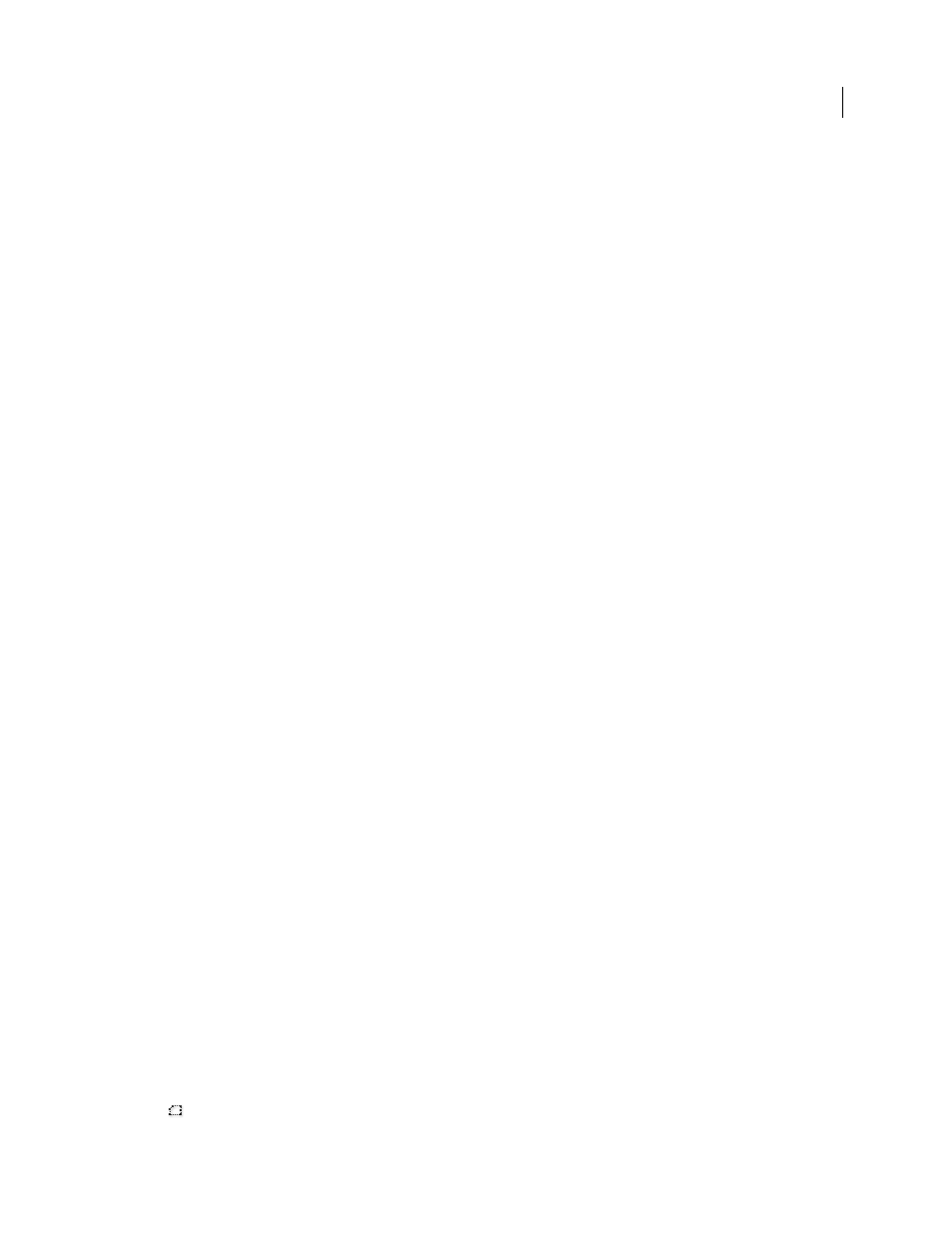Rotoscoping tips, Online resources about rotoscoping, View mask paths and shapes – Adobe After Effects CS4 User Manual
Page 329

323
USING AFTER EFFECTS CS4
Drawing, painting, and paths
Last updated 12/21/2009
Rotoscoping tips
•
Immediately after beginning to draw a mask, press Alt+Shift+M (Windows) or Option+Shift+M (Mac OS) to turn
on keyframing for that mask and set a keyframe. This way, you won’t edit a mask frame-by-frame for several
minutes (or longer) and then realize that you lost all of your work on previous frames because you forgot to click
the stopwatch to make the mask shape animated.
•
Draw your masks on a white solid layer with its Video (eyeball) switch off, above the (locked) footage layer. This
way, you run no risk of accidentally moving the footage layer when you manipulate the mask, and you can also
much more easily apply tracking data to the mask. (You apply the tracking data to the invisible solid layer that holds
the mask.) This also means that you don't lose your cached RAM preview frames each time you manipulate the
mask. (See “
Toggle visibility or influence of a layer or property group
page 156.)
•
Turn on the Preserve Constant Vertex Count preference. (See “
Designate the first vertex for a Bezier path
page 329.)
•
When possible, transform (rotate, scale, move) the whole mask or a subset of the mask vertices instead of moving
the vertices individually. This is both for efficiency and to avoid the chatter that comes from inconsistent movement
across frames. (See “
Move vertices in free-transform mode
•
Manual motion tracking is less time-consuming than manual rotoscoping. The more effort you spend getting good
tracking data for various parts of your scene and object, the less time you'll spend drawing and fine-tuning masks.
(See “
Tracking and stabilizing motion
Online resources about rotoscoping
Pete O'Connell provides excerpts on
Advanced Rotoscoping Techniques for After Effects DVD. This
tutorial series shows in detail how to rotoscope with After Effects masks and motion tracking to separate foreground
elements from the background in preparation for compositing work.
Sean Kennedy provides several good tutorials on the SimplyCG website, including some for rotoscoping in After
Effects. Sean maintains an index of these tutorials on
.
Scott Squires provides a pair of movies on his Effects Corner website that show how to rotoscope, both painting and
masking:
•
•
Chris and Trish Meyer provide some tips on animating masks, including using Smart Mask Interpolation, on the
.
Alejandro Pérez provides a script on the
with which you can use tracking data to position
individual mask vertices.
Mathias Möhl provides the KeyTweak script on
simultaneously. With KeyTweak, you can modify a few keyframes manually, and the script modifies the remaining
keyframes in between accordingly. KeyTweak is especially useful for Mask Path keyframes in a rotoscoping workflow.
View mask paths and shapes
•
To view mask paths for selected layers in the Timeline panel, press M.
•
To view selected masks or shapes in the Timeline panel, press SS (press the S key twice).
•
To view mask and shape paths in the Composition panel, click the Toggle Mask And Shape Path Visibility button
at the bottom of the Composition panel.